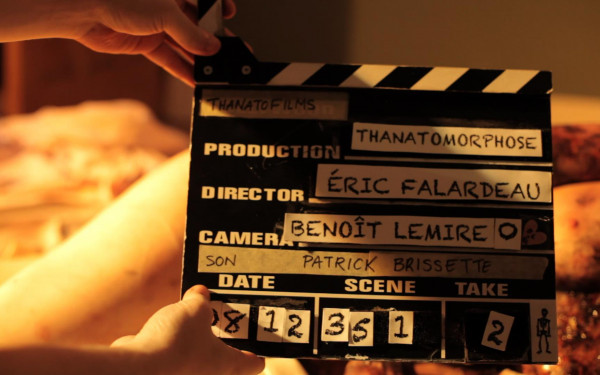Ever Deadly: A Cinematic Exploration of Tanya Tagaq
New Film Captures Inuk Artist’s Visceral Musical Experience
The opening seven minutes of the concert documentary Ever Deadly are captivating enough to be a short film on their own. In the foreground are Tanya Tagaq and fellow artist Laakkuluk Williamson Bathory, face-to-face, standing close enough to kiss.
Also in frame is Tagaq’s homeland of Iqaluktuuttiaq (Cambridge Bay), Nunavut, as the two women perform the traditional improvised call-and-response of Inuk throat singing.
The remainder of the film chronicles a live improvised performance of Tagaq’s shot by Maya Bankovic in Toronto. “The reason I love improvisation is that it’s only going to happen once this way, ever,” are Tagaq’s first words to those in attendance. The film bridges Tagaq’s performance with pencil-drawn animated illustrations from fellow Inuk artist Shuvinai Ashoona; lines from Tagaq’s 2018 novel, Split Tooth; her intergenerational pain, and the effects of colonialism on her family. There is a poeticism to the way Tagaq and Chelsea McMullan, her co-director, link each frame together.
Tagaq’s live performance is visceral and the word “singing” does not fully encapsulate her soundscape. Her throat singing switches from haunting, soaring howls to deep, grunting and guttural. Her movements flow from swaying and snakelike to wild and spasmodic. At one point, she collapses to the ground in high-pitched near-sobs. The sound shifts between soft and loud and her voice from agony to ecstasy. The rawness of her physical and artistic expression is palpable throughout. “Sound can heal, sound can kill, sound can be a spear, or a needle,” says Tagaq, quoting Split Tooth. And her singing is evidence of this.
Tagaq’s relationship with Nuna (the land) is intimate. Ever Deadly interlaces concert footage with footage filmed in Nunavut—scenes like ice rising and cracking, a white bird pecking at a red carcass against a snowy landscape, or the Aurora Borealis, green against the blackness of the night sky. “I like that it’s not a safe place, but it’s a real place. And it’s where the music comes from,” says Tagaq of her homeland. And Nuna contributes its own organic score. “I love the sound of the foot on the shell. I want to rework it and put it on my next album,” she says, laughing.
Also intimate are scenes of Tagaq with her family and community. In one instance, she sits with two small children on a tall rock by the ocean. “It’s so nice to see kids free, eh?” she says.
Scenes of Tagaq’s mother, Mary, speaking in Inuktitut are powerful. She explains how she and her family were relocated from Pond Inlet to Resolute Bay so the Canadian government could settle their own people and claim water rights in the Northwest Passage. Shots of Missing and Murdered Indigenous Women and Girls demonstrations are woven in and out of Tagaq’s performance. “I’d like to know why our people, our mothers, our children are being murdered at such a high rate!” demands an unnamed demonstrator. Sounds of protest morph into Tagaq’s throat singing as the film cuts back to her performance. And there is a moment of silence—the first and only one of this performance—as Tagaq looks up to the sky. Rage, grief, healing and resistance are epitomized in these scenes and in the way they are interwoven.
The film ends as the camera closes in on Tagaq and she rocks back and forth, eyes shut, chest heaving, oscillating her voice between breathy and guttural. As throughout the performance, everything is enveloped in bluish purple light. The audience erupts and Tagaq ends her performance by hugging her musicians. Before the scene cuts out, Tagaq’s face fills the frame and she tucks her hair behind her ear, smiling. The image sticks with you.
This article originally appeared in Volume 43, Issue 11, published February 7, 2023.



_600_375_90_s_c1.jpg)

